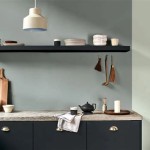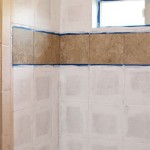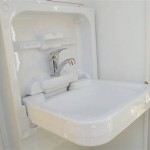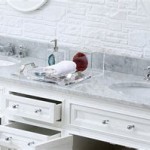Why Are There Sugar Ants In Your Bathroom?
The sudden appearance of tiny ants, often referred to as sugar ants, in a bathroom can be a common but frustrating experience for homeowners. These ants, characterized by their small size and attraction to sugary substances, are not a specific species but rather a collective term encompassing several ant species that share these traits. Understanding why these ants are drawn to the bathroom environment is crucial for effective prevention and elimination.
The presence of sugar ants indicates that the bathroom offers one or more resources that are essential for their survival and colony growth. These resources primarily include food sources, water, and suitable nesting locations. Addressing these factors is key to eliminating the infestation and preventing future occurrences.
Food Sources in the Bathroom
While a bathroom might not seem like an obvious place for food, sugar ants are opportunistic foragers and can find sustenance in unexpected places. The name "sugar ant" indicates their preference for sweet substances, but they are also attracted to other organic materials.
One common food source is residue from personal care products. Spilled shampoo, conditioner, body wash, and even toothpaste can contain sugars, oils, and other attractants that ants will readily consume. These spilled substances can accumulate in cracks and crevices around sinks, bathtubs, and showers, providing a continuous food source.
Hair and dead skin cells also serve as potential food sources for some ant species. These organic materials accumulate in drains and around the bathroom floor, offering a readily available food source, albeit less appealing to humans.
Additionally, some bathroom cleaning products might contain ingredients that attract ants, particularly if they are not thoroughly rinsed after use. The sugary or sweet-smelling components of certain cleaners can unintentionally lure ants into the bathroom.
Even seemingly insignificant food sources, such as crumbs from snacks brought into the bathroom or traces of food left on surfaces, can be enough to attract a scout ant. Once a scout ant discovers a food source, it leaves a pheromone trail that guides other ants from the colony to the same location, quickly escalating the infestation.
Water Availability in the Bathroom
Water is a vital resource for all living organisms, including ants. Bathrooms are inherently humid environments, providing a readily available source of moisture. Even small amounts of water can sustain an ant colony.
Leaky faucets, showerheads, and pipes are significant attractants for ants. The constant drip or dampness created by these leaks provides ants with a consistent water supply. Hidden leaks behind walls or under sinks can be particularly problematic, as they can remain undetected for extended periods, allowing ant colonies to thrive.
Condensation on pipes and surfaces also contributes to the bathroom's appeal to ants. The cool surfaces of pipes can accumulate condensation, providing a readily accessible source of water. Similarly, moisture that collects on tiles and shower doors after bathing can be utilized by ants.
Standing water in shower stalls or bathtubs can also attract ants. Even small puddles of water can be sufficient to meet their hydration needs. Neglecting to dry these surfaces after use can inadvertently provide ants with a vital water source.
High humidity levels in the bathroom, even without visible water sources, can be enough to attract ants. Humid environments allow ants to conserve moisture and thrive, making the bathroom an attractive habitat.
Suitable Nesting Sites within the Bathroom
Beyond food and water, ants require a safe and protected nesting site. Bathrooms, with their numerous crevices, voids, and potential for hidden spaces, can provide ideal nesting locations.
Gaps and cracks in walls, floors, and around plumbing fixtures offer ants easy access to concealed nesting areas. These gaps can provide protection from predators and environmental elements, allowing colonies to establish themselves undisturbed.
Voids behind tiles and under bathroom cabinets can also serve as nesting sites. These spaces are often dark, humid, and protected, making them ideal for ant colonies to expand. Access to these voids can be gained through small cracks or gaps in the grout or sealant.
Damp or rotting wood within the bathroom can also attract ants. Certain ant species, such as carpenter ants, are particularly drawn to damp wood, as it is easier to excavate and use for nesting. Leaky pipes or inadequate ventilation can contribute to damp wood conditions.
Even objects stored in the bathroom, such as boxes or containers, can provide nesting opportunities for ants. These items can offer a protected and secluded space for a colony to establish itself, particularly if they contain food residue or other attractants.
Ants can also nest outside the bathroom but forage inside for resources. Colonies located in nearby walls, under floors, or in the yard can send worker ants into the bathroom to seek out food and water, leading to the appearance of ants within the space.
Identifying the specific nesting location is crucial for effective ant control. While eliminating food and water sources can help reduce the ant population, addressing the nest directly is often necessary for complete eradication.
Preventing sugar ants from entering the bathroom requires a multi-faceted approach that focuses on eliminating food and water sources, sealing potential entry points, and maintaining a clean and dry environment. Regular cleaning, prompt leak repairs, and proper storage of personal care products can significantly reduce the attractiveness of the bathroom to ants. In cases of persistent infestations, professional pest control services may be necessary to identify and eliminate the ant colony.

How To Get Rid Of Sugar Ants John Moore Services

Where Do Sugar Ants Come From How To Keep Them Away Abc Blog

Boise Idaho Pest Control Pestcom

Why Do I Have Ants In My Bathroom

Niagara Pest Control Why Are There Carpenter Ants In The Bathroom

Get Rid Of Sugar Ants In 3 Steps

Why Do I Have Hundreds Of Tiny Ants All Over My Kitchen

Why Tiny Ants Have Invaded Your House And What To Do About It

How To Get Rid Of Sugar Ants In Your Kitchen Or Bathroom

How To Get Rid Of Ants A Complete Guide 2024
Related Posts







